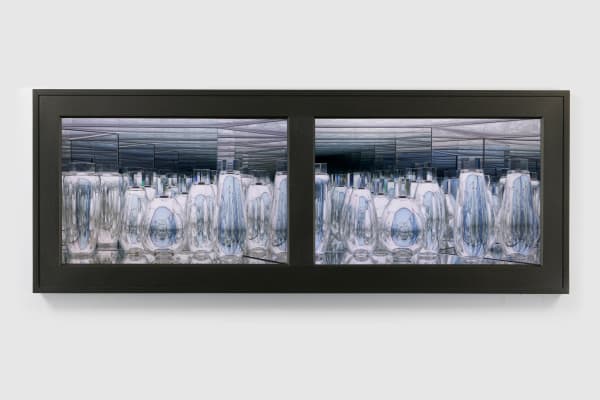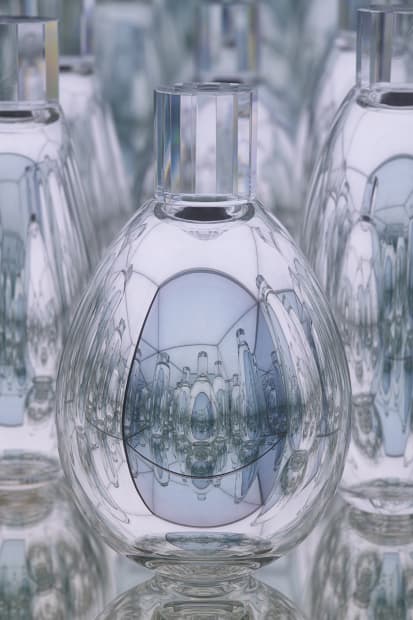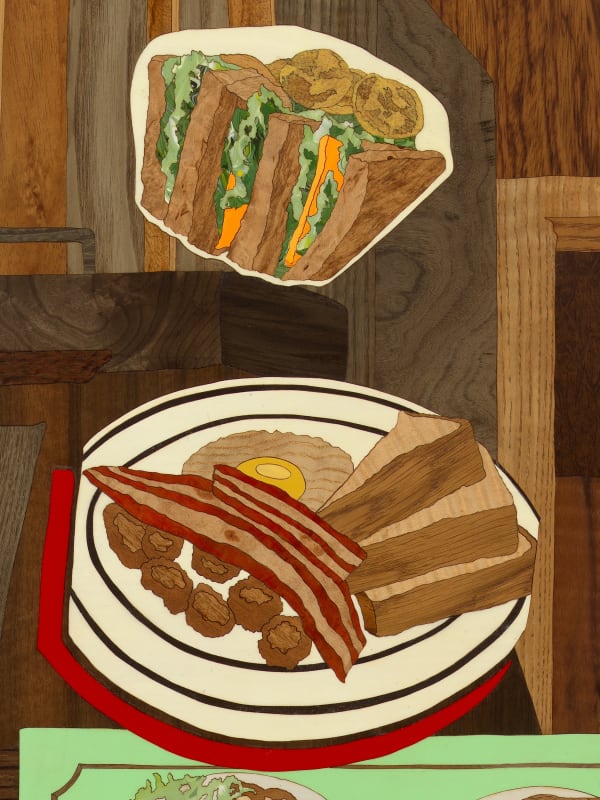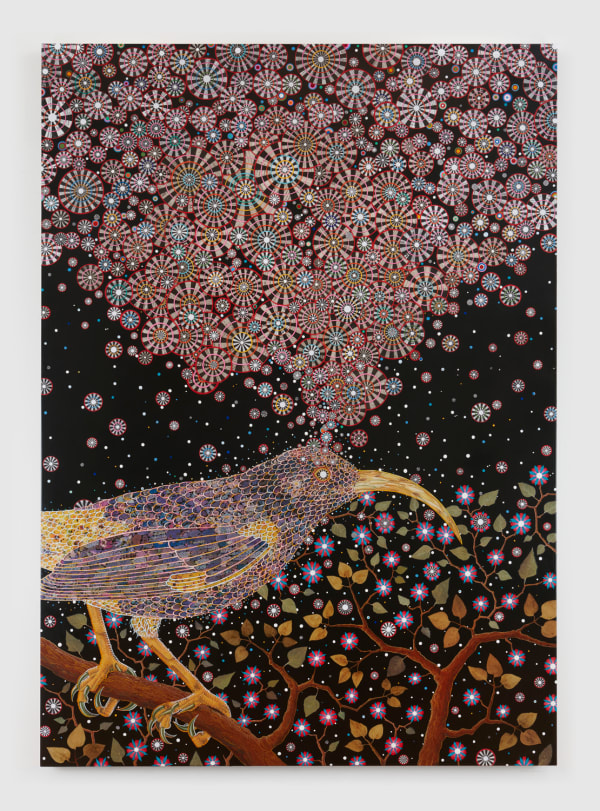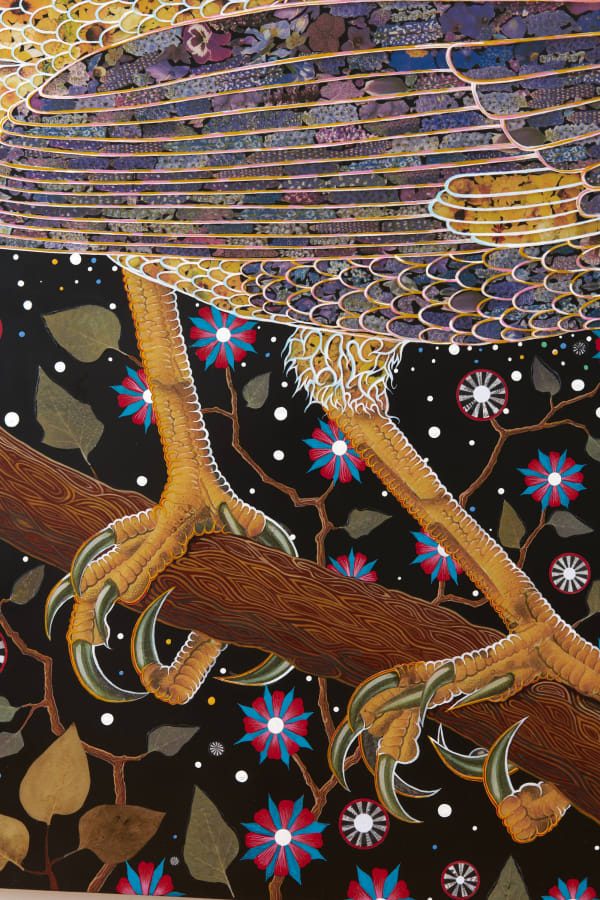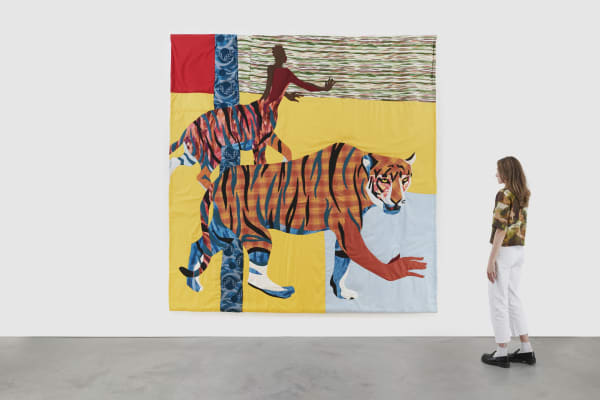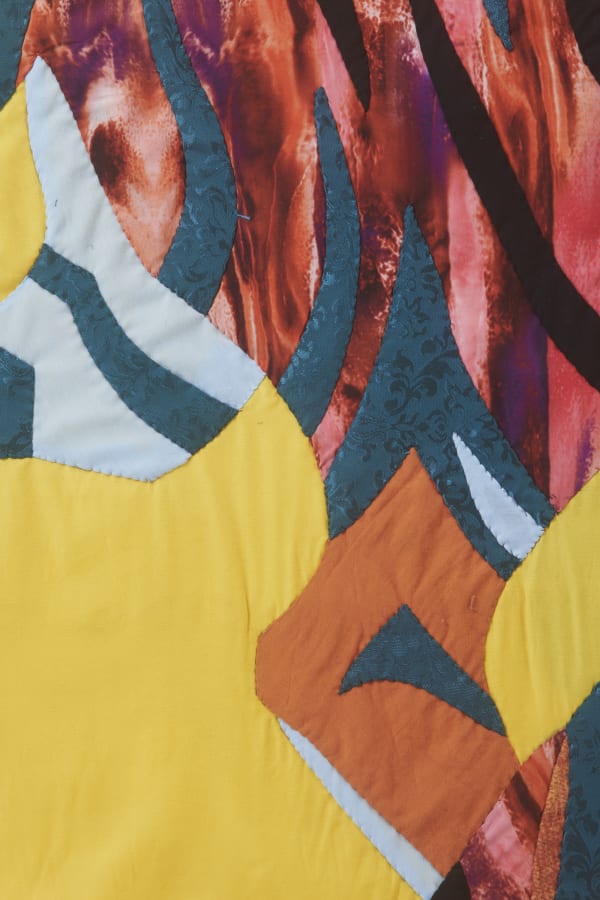-
For the 2022 edition of The Armory Show, James Cohan will present a selection of new and important work by Federico Herrero, Josiah McElheny, Christopher Myers, Jordan Nassar, Katie Paterson, Fred Tomaselli, Yinka Shonibare CBE, and Alison Elizabeth Taylor. The fair is open to the public from September 9 through September 11, with a preview on September 8 by invitation only. Preview a selection of works from our booth ahead of the fair in our Viewing Room.
-
YINKA SHONIBARE CBE
-
Over the past three decades, Yinka Shonibare CBE has become well known for his exploration of colonialism and post-colonialism within the contemporary context of globalization. Working in painting, sculpture, photography, film and installation, Shonibare’s work examines race, class and the construction of cultural identity through a sharp political commentary of the tangled interrelationship between Africa and Europe and their respective economic and political histories. Using wry citations of Western art history and literature, Shonibare questions the validity of contemporary cultural and national identities.
Food Kid (Girl) II depicts a girl of about 8 or 9-years-old carrying a harvest basket on her back containing a cornucopia of crops that grow in Africa. The produce includes native, local, and heavily exported fruits, vegetables, and legumes such as coffee, African eggplant, sweet potato, peanuts, and many others. The girl’s head is a hand-painted globe depicting world-wide temperature anomalies that have occurred in recent years, based on data collected by NASA. The figure steadies herself under the weight of her arcing bounty—one arm outstretched, the other holding a mango—alluding to the responsibility we must all bear if we are to build a more equitable and sustainable food system globally. -
JOSIAH MCELHENY
-
Each work within Josiah McElheny's series entitled “From the Library of…” is a depiction of an imaginary library housing a multitude of containers or repositories for knowledge, represented by hand-blown mirrored objects. Inspired by Jorge Luis Borges’ confounding short story The Library of Babel, 1941, these archives propose to contain knowledge within unique, material objects. The container forms, “as mysterious as the knowledge itself”, suggest that knowledge is “potentially beyond words or books”. Appearing to be a framed, 2D image on the wall, each work in the series is in fact a kind of architectural intervention. Viewers look within each frame towards a vista of endlessly refracted hexagonal architecture, implying that each library is vast and just one of many possible collections.
-

-
ALISON ELIZABETH TAYLOR
-
Alison Elizabth Taylor's Try Us is an homage to the pluckiness and importance of local, independent businesses within our communities and evokes the precarious position of many New York mom-and-pops, particularly restaurants. The work depicts the storefront window of a diner or bodega. Decals advertising an assortment of prepared foods including bagels, burgers, and deli sandwiches mark this business as the type of familiar fixture seen on neighborhood blocks throughout the city.
Despite these instantly recognizable signs, the details of the image reveal a less reliable reality. The lights lining the window are illuminated, but behind the glass, the shelves are bare. There are e-bikes outside, seeming to indicate take-out orders in action, but no people are visible inside or outside the restaurant. These indeterminate signals prompt us to ask: Is it open? Is it new, or was it there before the pandemic? Did it close recently? At the same time, the invocation to “Try Us,” which hangs in the window, reads as both an invitation and a challenge: simultaneously welcoming customers and defiantly insisting on staying afloat amid an ongoing global health and economic crisis.
-
JORDAN NASSAR
-
In his newest embroidery, Jordan Nassar connects multiple richly patterned panels and interspersed landscapes to create a complete image. The composition En route vers le désert, 2022, whose title translates to “En route toward the desert”, vibrates with color using the same square geometric motif throughout. A mountain cascading toward the desert unravels from the upper left corner descending downwards, surrounded by buzzing yellow and red decorative panels. Nassar approaches each embroidery as if he was piecing together panels in a puzzle, fitting them together harmoniously to create a unified composition from disparate parts.
-

-
Language continues to serve as a generative source for Nassar, who turned to the work of Lebanese-American poet Etel Adnan to title this artwork. Much like Adnan, Nassar projects his personal ruminations outwards, bringing them into dialogue with larger ideas about diaspora and global uncertainty.
-
FRED TOMASELLI
-
Fred Tomaselli’s most recent resin encapsulated collage work, Honeycreeper, 2022, depicts a Mamo Honeycreeper, now extinct following the European colonization of Hawaii. Represented ominously white-eyed, the imposing, fiercely hook-beaked bird rests on a flowering branch, which it tightly clutches with threateningly sharp talons. Spiraling upwards from the bird is a burst of collaged newsprint pinwheels that germinate across the picture plane in mesmerizing and hallucinatory patterns, like a blooming bouquet or a mutating virus–the idyll of nature pierced by the man-made world.
Hawaiian Honeycreepers descended from finches and once totaled 51 sub-species. Contemporaneously, more than half of these nectar-eating species are now extinct due to human impact. For Tomaselli, making the Mamo Honeycreeper visible in his work is a way to see the unseeable, and acknowledge the Holocene Extinction and humanity's precarious relationship with nature.
-
Katie Paterson
-
Scottish artist Katie Paterson is known for her multi-disciplinary and conceptually-driven work with an emphasis on the sublime power of the natural world, the universe, and deep time. Collaborating with scientists and researchers across the world, her artworks make use of sophisticated technologies and specialist expertise to stage intimate, poetic and philosophical engagements that collapse the distance between the viewer and the most distant edges of time and the cosmos.
A lifelong series, Katie Paterson's Ideas are artworks that may or may not come into being. These short haiku-like sentences, formed in sterling silver, take shape in the imagination of whoever reads the words and so become an expression of the idea itself.
-
CHRISTOPHER MYERS
-
Christopher Myers is an artist and writer whose work across disciplines is rooted in storytelling. Myers delves into the past to build narratives that speak to the slippages between history and mythology. His diverse practice spans textiles, performance, film, and sculptural objects, often created in collaboration with artisans from around the globe.
Men Turning into Tigers, 2022, takes inspiration from the particularly rich, visionary texts which vividly record the dreams of Hong Xiuquan, who led the Taiping Rebellion. While many of his visions are very closely allied with Christian imagery, in one, he dreams of men turning into tigers. This particular vision of men transforming into tigers has a long history in China and often refers to people who are victims of generational or hereditary curses.
In some ways, Hong Xiuquan saw the rule of the Manchus (and their alliances with the West) as a hereditary curse that needed to be overcome. His embrace of his particular, personal form of Christianity–in which he was identified as God’s Chinese Son alongside Jesus Christ–was a way to break this hereditary curse. -
Selected Works
-
 YINKA SHONIBARE, Food Kid (Girl) II, 2022
YINKA SHONIBARE, Food Kid (Girl) II, 2022 -
 JOSIAH MCELHENY, From the Library of Doubles I, 2022
JOSIAH MCELHENY, From the Library of Doubles I, 2022 -
 ALISON ELIZABETH TAYLOR, Try Us, 2022
ALISON ELIZABETH TAYLOR, Try Us, 2022 -
 JORDAN NASSAR, En route vers le désert, 2022
JORDAN NASSAR, En route vers le désert, 2022
-
 KATIE PATERSON, Ideas (A fireworks display recreating every comet in history), 2021
KATIE PATERSON, Ideas (A fireworks display recreating every comet in history), 2021 -
 KATIE PATERSON, Ideas (The last sunset on earth slowed to eternity), 2021
KATIE PATERSON, Ideas (The last sunset on earth slowed to eternity), 2021 -
 KATIE PATERSON, Ideas (A paint set containing the first colours on earth), 2021
KATIE PATERSON, Ideas (A paint set containing the first colours on earth), 2021 -
 KATIE PATERSON, Ideas (A dimmer switch that adjusts the brightness of space), 2021
KATIE PATERSON, Ideas (A dimmer switch that adjusts the brightness of space), 2021
-
The Armory Show 2022
Past viewing_room




